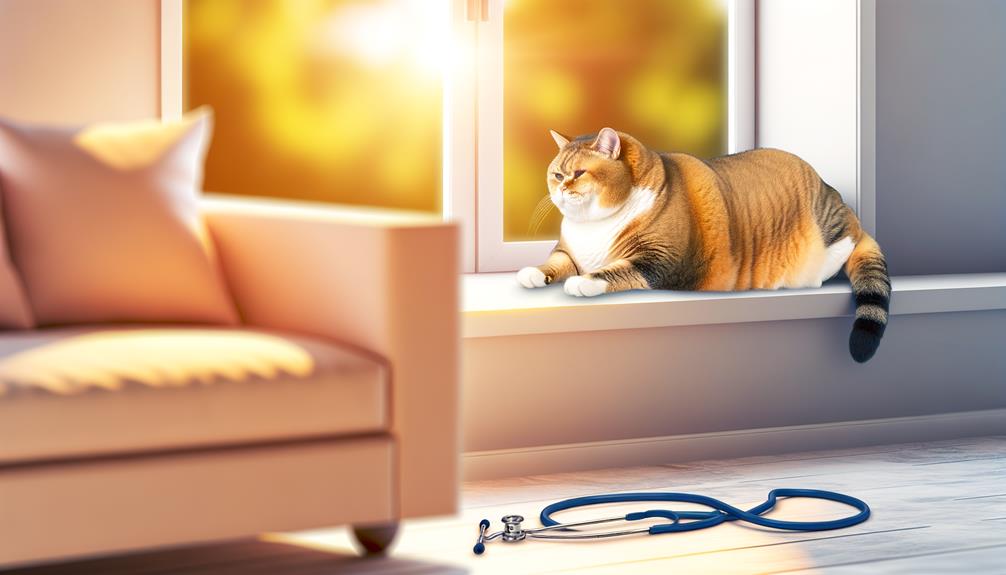You've probably heard that female cats can gain weight after being spayed, and there's some truth to that. Hormonal changes post-surgery can alter their metabolism and appetite, making them more prone to weight gain. But does this mean your cat is destined to become overweight? Not necessarily. By understanding the reasons behind this tendency and taking some proactive steps, you can help manage your cat's weight effectively. So, how do diet and exercise come into play, and what do vets recommend? Let's explore these aspects to guarantee your cat stays healthy and happy.
Weight Gain Post-Spaying
Experiencing weight gain post-spaying is a common occurrence in female cats, primarily due to a slowdown in their metabolism and hormonal changes that can increase appetite. When you have a spayed female cat, you might notice a notable increase in abdominal fat, which contributes to an overall rise in body fat percentage. This shift in your cat's body condition is primarily due to changes in energy requirements and how their body processes food post-surgery.
Spayed female cats typically need about 261 kcal/day, a significant decrease from the 305 kcal/day required by intact cats. This reduced energy requirement means that if you continue feeding your cat the same portions as before, weight gain is almost inevitable. Consequently, it's vital to adjust food portions accordingly to prevent unnecessary weight gain.
Monitoring your cat's body condition is fundamental. You'll want to regularly check for any increases in abdominal fat and overall body fat percentage. By doing so, you can make informed decisions about your cat's diet and activity levels. This proactive approach helps in maintaining a healthy weight after being spayed.
Many cat owners have reported similar experiences, emphasizing the importance of effective weight management strategies. It's not uncommon for spayed female cats to experience a noticeable weight gain if their diet isn't adjusted to match their new energy requirements. By understanding these changes and carefully managing food portions, you can help guarantee your cat remains healthy and active post-spaying. Regular monitoring and appropriate dietary adjustments are key to managing your spayed cat's weight effectively.
Dietary Adjustments
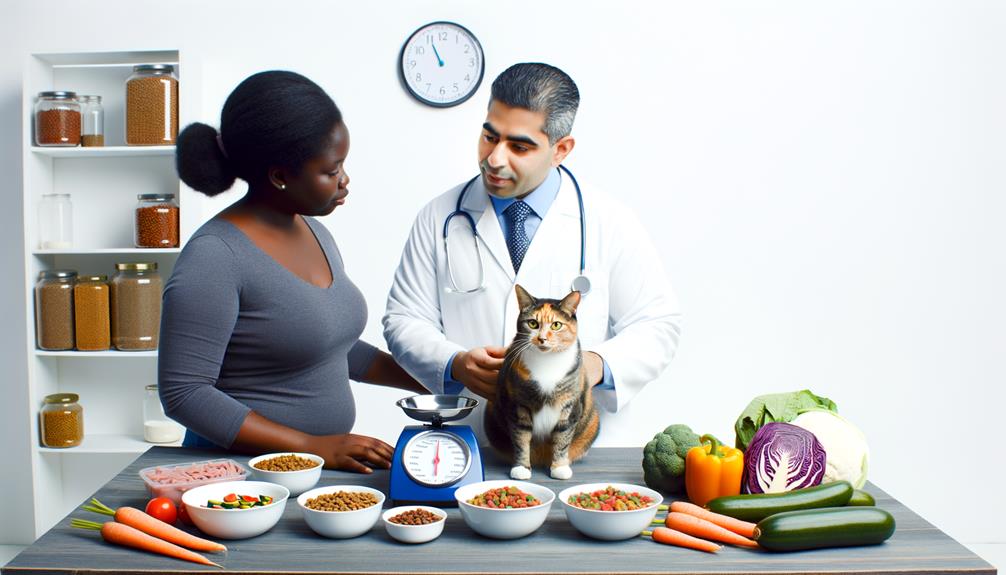
When it comes to dietary adjustments for your spayed female cat, it's vital to recognize the need for a reduction in food intake to manage potential weight gain. Post-surgery, your cat's metabolism will likely slow down, meaning she won't burn calories as quickly as before. Consequently, maintaining her weight will require careful attention to her diet.
One of the primary dietary adjustments is shifting your cat from high-calorie kitten food to lower-calorie adult maintenance food. This switch can help manage her calorie intake more effectively, ensuring she doesn't consume excess calories that could lead to weight gain. It's important to monitor her food portions regularly, as spayed female cats may exhibit changes in their feeding habits and appetite.
To further control food intake, consider implementing controlled feeding strategies like meal feeding instead of free-feeding. With meal feeding, you can regulate the amount of food your cat consumes at each sitting, preventing her from overeating. This approach not only helps in managing her weight but also allows for better observation of her eating patterns and any sudden changes in appetite.
Nutritional balance is another significant aspect of dietary adjustments. Including a diet rich in plant fiber can help your cat feel fuller faster, which reduces the risk of overeating. Fiber-rich foods can also aid in digestion and contribute to overall health.
Exercise and Activity
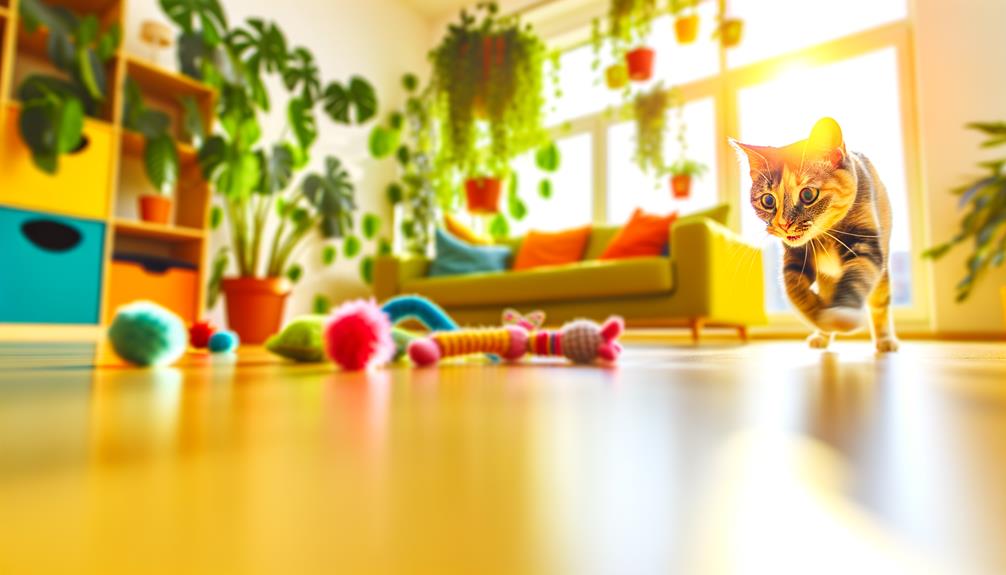
Regular exercise is an essential component in managing the weight of spayed female cats, as their metabolism often slows post-surgery. To counteract this natural tendency for weight gain, it's vital to incorporate consistent physical activity into your cat's daily routine. A simple yet effective strategy involves engaging in daily playtime sessions of at least 15 minutes. These short bursts of activity can greatly contribute to maintaining a healthy weight and promoting overall fitness.
For indoor cats, structured play sessions using interactive toys are particularly important. Since indoor cats are less likely to roam freely, they need additional encouragement to stay active. Toys such as feather wands, laser pointers, and motorized mice can provide the necessary stimulation to keep your cat moving. Additionally, integrating exercise into feeding routines can be beneficial. Using food dispensing toys not only promotes physical activity but also offers mental engagement, making mealtimes more enriching.
It's also worth noting that consistent exercise does more than just manage weight; it fosters a strong bond between you and your cat. Regular playtime enhances the emotional well-being of your spayed cat, contributing to a happier and healthier life. By making exercise a part of your daily interactions, you create positive experiences that go beyond just physical health.
Common Experiences
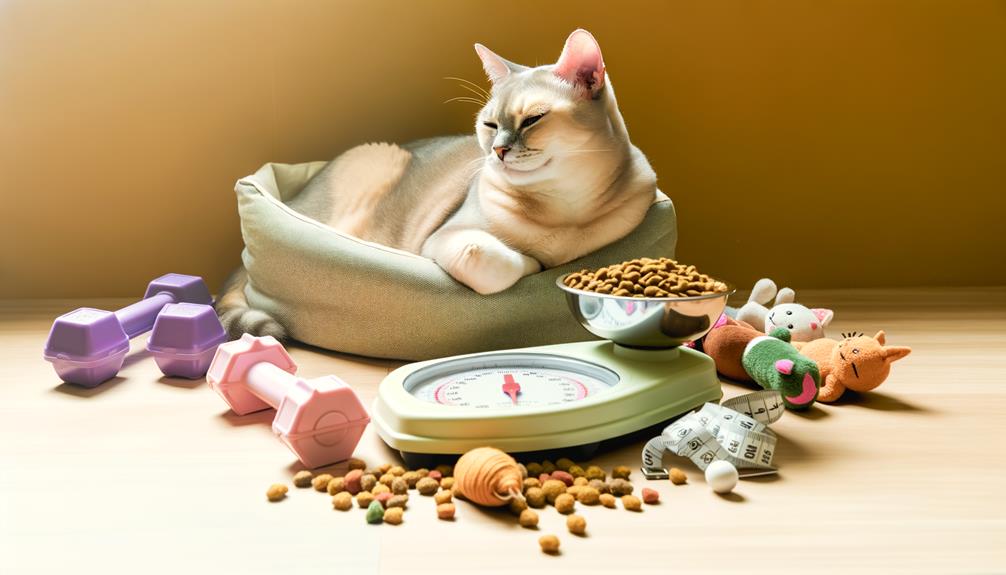
Understanding how exercise can help manage your spayed female cat's weight, it's also important to contemplate the common experiences shared by many cat owners. Post-spaying, many report a noticeable trend of weight gain in female cats, with several observations pointing to an increase in abdominal fat. This phenomenon isn't limited to a specific breed; it spans across various types, including calico cats.
The metabolic changes that occur after spaying, such as a slower metabolism and potential appetite increase, are often cited as primary culprits. These changes can make weight management a bit tricky for cat owners. Regular monitoring of weight becomes essential, as many female cats exhibit similar patterns of weight gain post-surgery.
Below is a table summarizing common experiences reported by cat owners:
| Common Experience | Description |
|---|---|
| Weight Gain Trend | Many cat owners report weight gain in female cats post-spaying |
| Abdominal Fat Increase | A notable rise in abdominal fat contributing to overall weight gain |
| Metabolic Changes | Slower metabolism and potential appetite increase are frequently observed |
| Individual Variability | Weight gain varies among individual spayed female cats, regardless of age or breed |
While these experiences are common, they're not universal. Some cat owners find their pets maintain a steady weight post-spaying. However, the emphasis remains on vigilance. Monitoring weight regularly can help you catch any unwanted changes early, allowing for timely dietary adjustments and increased physical activity.
Understanding these common experiences can better equip you to manage your spayed female cat's weight effectively. By staying aware of these trends and being proactive in your approach, you can help guarantee your cat maintains a healthy, balanced lifestyle post-surgery.
Veterinary Insights
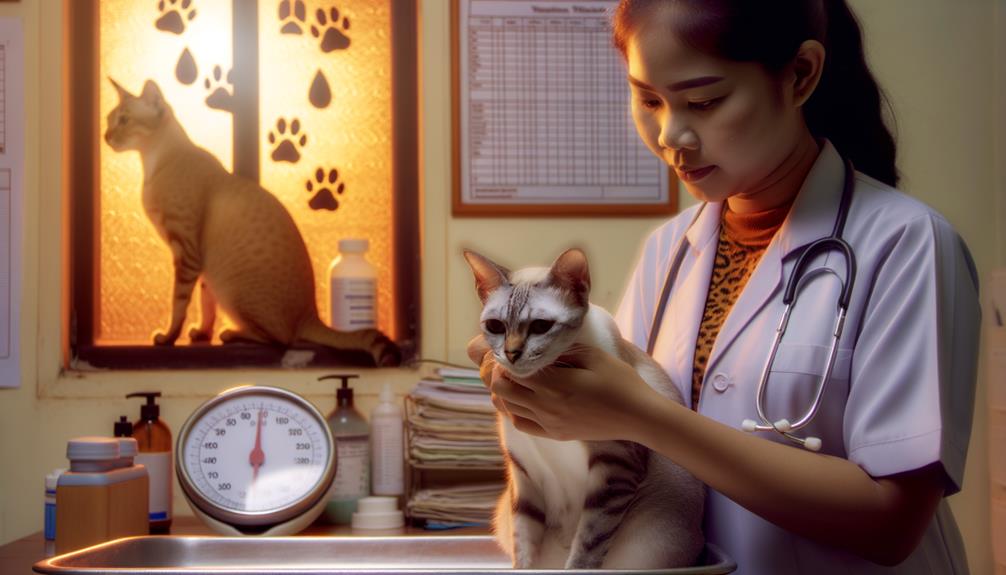
Veterinarians play an essential role in managing the health of spayed female cats, offering valuable insights into post-surgery weight management. They emphasize the importance of monitoring weight in these cats due to the hormonal and metabolic changes that occur after spaying, which can increase the risk of obesity. Regular check-ups are important for evaluating weight and overall health, enabling timely dietary adjustments to prevent excessive weight gain.
After spaying, female cats often experience an increased appetite, which can lead to weight gain if their calorie intake isn't carefully managed. Veterinarians typically recommend shifting spayed cats to lower-calorie diets. Standard kitten food is often too high in calories for their reduced energy needs, making dietary adjustments necessary for maintaining a healthy weight.
Monitoring and adjusting food portions is another key strategy endorsed by veterinary professionals. By controlling calorie intake and guaranteeing your cat gets the right nutrients, you can help prevent obesity and its associated health issues such as diabetes and joint problems.
Exercise is also an important component in weight management for spayed female cats. Veterinarians often suggest incorporating more playtime and physical activities into your cat's routine to help burn off excess calories.
Awareness of the potential for weight gain post-spaying is essential. Proactive weight management strategies, guided by veterinary insights, can greatly reduce the risk of obesity and improve your cat's overall health and longevity. By staying informed and working closely with your veterinarian, you can guarantee that your spayed female cat remains healthy and active.
